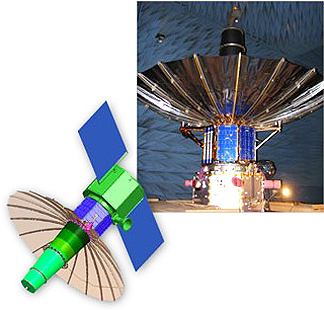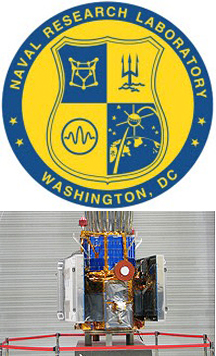 [SatNews] The next launch from the Kodiak Launch Complex in Alaska is coming up very shortly...
[SatNews] The next launch from the Kodiak Launch Complex in Alaska is coming up very shortly...
The Naval Research Laboratory’s Tactical Satellite IV (TacSat-4) is scheduled to launch from the Alaska Aerospace Corporation’s Kodiak Launch Complex, Tuesday, September 27, 2011, aboard an Orbital Sciences Corporation Minotaur-IV+ launch vehicle. The Office of Naval Research (ONR) sponsored the development of the payload and the first year of operations. The Operationally Responsive Space (ORS) Office funded the launch, which is managed by the Space Development and Test Directorate (SD), a directorate of the Air Force Space and Missile Systems Center (SMC). Shortly after launch, the TacSat-4 spacecraft will be deployed into a unique, highly elliptical orbit with an apogee of 12,050 kilometers. This orbit helps augment current geosynchronous satellite communication by including high latitudes.
TacSat-4 is a Navy-led joint mission which provides 10 Ultra High Frequency (UHF) channels and allows troops using existing radios to communicate on-the-move (COTM) from obscured regions without the need for dangerous antenna positioning and pointing. "Communication is a critical warfighting requirement. TacSat-4 will support forward deployed forces at sea and Marines on the ground," said Dr. Larry Schuette, ONR’s director of innovation. “We've developed a technology more rapidly and at lower cost that will supplement traditional satellites, giving multiple combatant commanders around the globe another outlet for data transmission and communications on the move.”
TacSat-4 provides flexible up and down channel assignments, which increase the ability to operate in busy radio-frequency environments and will cover the high latitudes and mountainous areas where users currently cannot access UHF satellite communications (SATCOMs). The NRL Blossom Point Ground Station provides the command and control for TacSat-4. The Virtual Mission Operations Center (VMOC) mission planning system allows dynamic reallocation to different theaters worldwide that enables rapid SATCOM augmentation when unexpected operations or natural events occur.
 Marking the 100th launching of an NRL built satellite into orbit, TacSat-4 is an experimental spacecraft that will test advances in several technologies and SATCOM techniques. Ultimately, TacSat-4 will augment the existing fleet by giving the SATCOM Support Centers (SSC) an additional space asset to provide communications to otherwise under-served users and areas that either do not have high enough priority or do not have satellite visibility. The project helps define future options for launching one or more smaller, highly elliptical orbit (HEO) satellites allowing the military to achieve the benefits of a combined HEO and geosynchronous orbit constellation.
Marking the 100th launching of an NRL built satellite into orbit, TacSat-4 is an experimental spacecraft that will test advances in several technologies and SATCOM techniques. Ultimately, TacSat-4 will augment the existing fleet by giving the SATCOM Support Centers (SSC) an additional space asset to provide communications to otherwise under-served users and areas that either do not have high enough priority or do not have satellite visibility. The project helps define future options for launching one or more smaller, highly elliptical orbit (HEO) satellites allowing the military to achieve the benefits of a combined HEO and geosynchronous orbit constellation.
The spacecraft bus was built by NRL and Johns Hopkins University Applied Physics Laboratory (APL) to mature ORS bus standards. It was developed by an Integrated (government and industry) System Engineering Team, the “ISET Team,” with active representation from AeroAstro, Air Force Research Laboratory, Johns Hopkins Laboratory APL, ATK Space, Ball Aerospace and Technologies, Boeing, Design Net Engineering, General Dynamics AIS, Microcosm, Microsat Systems Inc., Massachusetts Institute of Technology Lincoln Laboratory, Orbital Sciences, NRL, SMC, Space System Loral, and Raytheon. The Office of the Director of Defense Research and Engineering (DDR&E) funded the standardized spacecraft bus.
TacSat-4 is managed by the Naval Research Laboratory Naval Center for Space Technology. The Naval Research Laboratory is the Department of the Navy's corporate laboratory. NRL conducts a broad program of scientific research, technology, and advanced development. The Laboratory, with a total complement of nearly 2,500 personnel, is located in southwest Washington, D.C., with other major sites at the Stennis Space Center, Miss., and Monterey, Calif.

